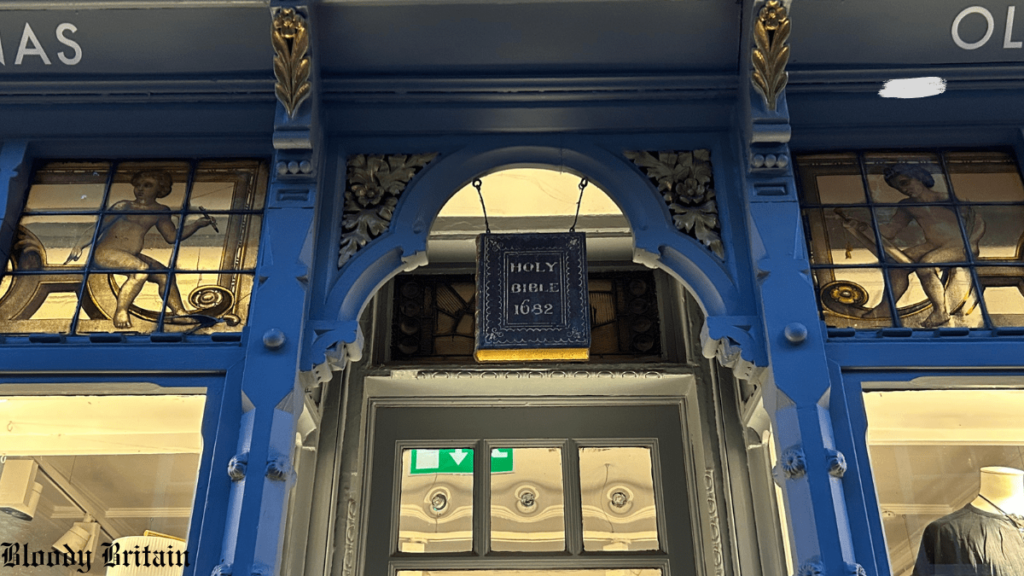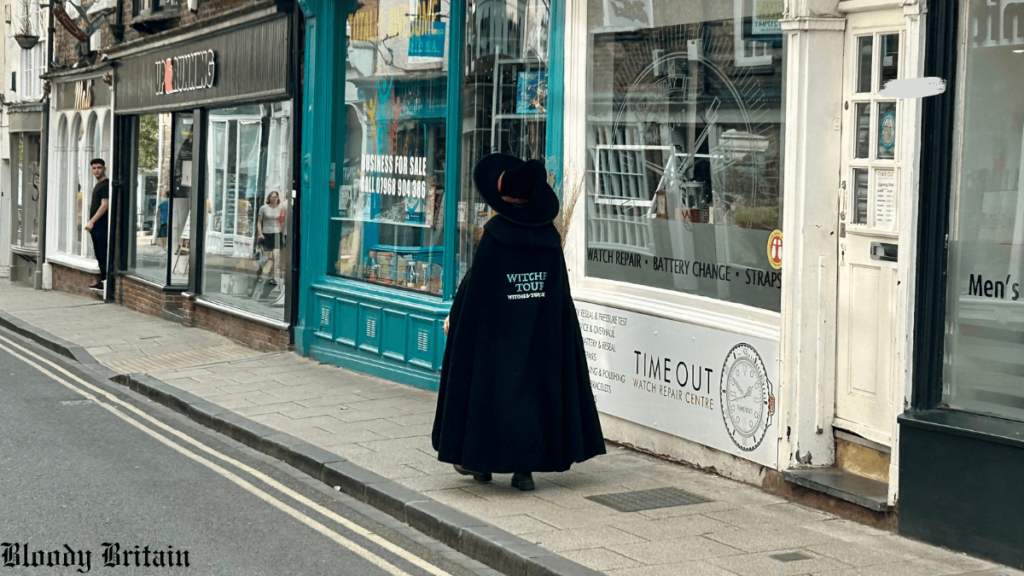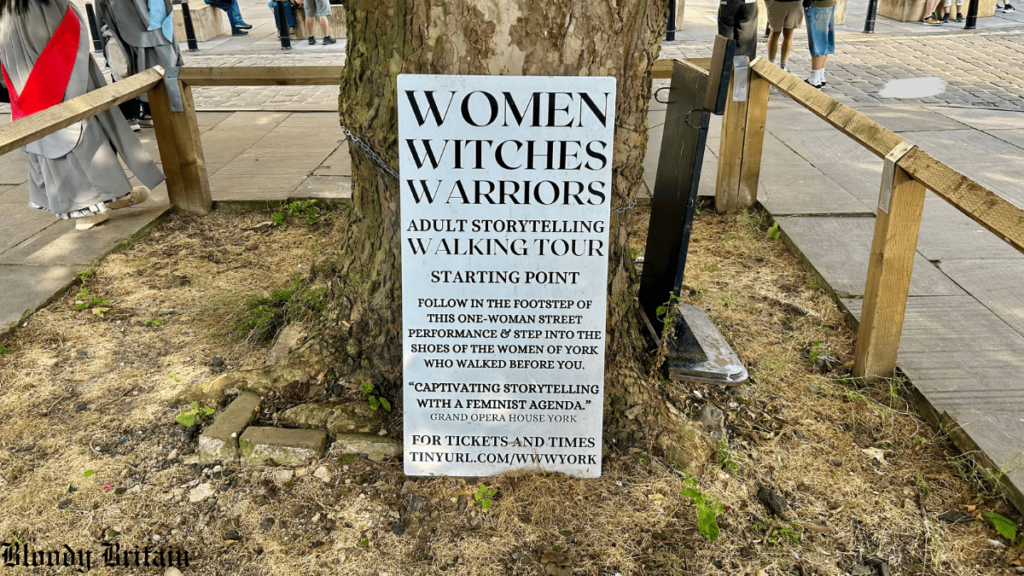The English Witch Trials were one of the darkest periods in that country’s history. Taking place over a roughly 300-year period (beginning in the 1400s and lasting until the 1700s).
The era marked a reign of terror over women who were seen as ‘other’ and saw the brutal deaths of more than 500 people, roughly 90% of which were women.
As you won’t be surprised to learn, there are a lot of places in the UK tainted by this dark legacy. Rightly or wrongly, these places attract a lot of dark tourists interested in the history of the Witch Trials and the sinister exploits of such men as Matthew Hopkins (the self-styled “Witchfinder General”).
Let me bring you on a journey into six places that have been indelibly marked by their association with the horrors of the Witch Trials.
The Pendle Witch Trail
The Pendle Witch Trail is a route in Lancaster, in the north of England. It follows the route taken by the so-called “Pendle Witches”, which starts with the place where they were arrested (Pendle Hill) and concludes in the place of their eventual executions (Lancaster).
The context in which the Pendle Witches were arrested and tried read a little like the Hatfield-McCoy feud, but with Satanic pacts: the accused consisted mostly of people from two families, the Devices and the Chattoxes.
One of the accused, mononymically named “Demdike” (a bit like a 17th-century Prince or Zendaya), was the matriarch of the Device family and had been known locally as a “witch” for 50 or so years. This was a common term at the time for cunning women – folk healers who tended to local villagers and townsfolk.
Demdike became accused of witchcraft after her granddaughter, one Alizon Device, tried to buy/beg steel pins from a passing merchant. After the merchant refused, she purportedly cursed him with lameness; the merchant stumbled and fell, and she became convinced of her own infernal powers, later freely confessing to the act.
”Hundreds of women were executed on the say-so of Cuthbert Nicholson, witch-pricker and surely in the running for Greatest British Prick of All Time. Thankfully, he was eventually caught and ended up with a hemp necktie himself.”
This confession led to Alizon’s arrest. While being questioned, she saw the opportunity to share the misery with a rival family, the Mattoxes, whom she believed to have been extorting money from her then-dead father via witchcraft. And so it was that a simple financial transaction resulted in one of the most infamous witch trials in English history.
When all was said and done, nine women and two men were hanged as witches. The Pendle Witch Trial follows the route that these men and women would have taken, starting in Barrowford (near Pendle Hill) and terminating in Lancaster.
The Town Moor, Newcastle
In something of an unusual holdover from yesteryear, the north-eastern city of Newcastle retains a huge swathe of land smack-bang in the city center called the “Town Moor.”

It’s an area of common land used for cattle grazing and recreation, and it’s a very sizeable piece of land – at roughly 1000 acres, it’s bigger than London’s Hampstead Heath and Hyde Park combined.
It’s also the site of one of the most notorious mass hangings during the witchcraft hysteria. In August of 1649, fourteen people (thirteen women and one man) were hanged on the town moor after being convicted of witchcraft.
The manner in which the ‘proof’ of their witchcraft was, even at the time, called into question. The Scottish “witch-pricker” who was brought in to ascertain their guilt, a man named Cuthbert Nicholson, was noted for his long-handled “witch-pricker” needle and his flamboyant method of pricking the alleged witches.
This “witch-pricking” was done because it was alleged that witches did not bleed when pricked in the place the Devil had been sucking their blood; Nicholson, it later transpired, was using a retractable needle that never entered the skin and thus could not possibly have caused them to bleed.
Think about that for a moment: this man was deliberately faking witchcraft in order to send innocent women to the gallows or the stake. All for 20 shillings a head.
Hundreds of women were executed on the say-so of Cuthbert Nicholson, witch-pricker and surely in the running for Greatest British Prick of All Time. Thankfully, he was eventually caught and ended up with a hemp necktie himself.
Colchester Castle, Essex
Of all the witch-finders and witch-prickers of the 15th-18th centuries, none stand in more infamy than Matthew Hopkins, the self-styled “Witchfinder General”. Hopkins was renowned and feared the country over at the height of his powers in the early- to mid-17th century.
Hopkins and his fellow witch hunter, a man named John Searne, were based out of the East Anglian county of Essex, and it was from the city of Colchester that they conducted their reign of terror.
The castle was used as a base of operations for their endeavors, and it was in the dungeon of Colchester Castle where Hopkins would interrogate (read: torture) the hapless women his witch-finders took.
”Anyone with even an iota of humanity will be gratified to see that Hopkins did not make old bones – he died in his late twenties, probably as a result of tuberculosis.”
Hopkins would “cut” his victims with a blunt knife (as this would ensure they didn’t bleed, thus constituting “proof” of witchcraft), throw them into water tied to a chair (their floating would provide further “proof”), and employ “witch prickers,” who would shave the victim all over before pricking them with needles to find the “Devil’s Mark” which did not bleed when pricked.
Standing in the dungeons of Colchester Castle is an eerie experience indeed, particularly when you think about all of the women who were tortured there on Hopkins’ say-so.
And while you’re in Essex, you’d do well to check out another Hopkins haunt…
The Mistley Thorn, Essex
The Mistley Thorn is a pub that stands on the site of the pub of the same name where Hopkins established his grisly venture.
Though the original inn – owned by Hopkins himself – was torn down at some point in the late 17th or early 18th century – the Mistley Thorn that stands there today dates to 1723.

Hopkins is actually buried in the town of Mistley (named Mistleythorn in Hopkins’ day), and his grave makes for a must-see for anybody engaging in a witchcraft tour of the UK.
Anyone with even an iota of humanity will be gratified to see that Hopkins did not make old bones – he died in his late twenties, probably as a result of tuberculosis.
The Museum Of Witchcraft And Magic, Boscastle, Cornwall
One of the more recent additions to the historical English witchcraft scene, the Museum of Witchcraft and Magic (originally just the “Museum of Witchcraft”), is located in Boscastle, Cornwall, and is one of the most fascinating and comprehensive tributes to the black history of the witch to be found anywhere in the world.
The founder of the museum, a film producer called Cecil Williamson, had tried for years to open a museum dedicated to the occult – an interest born out of his own interest in the subject (and belief that the supernatural was real).
Unfortunately, the British public of the late 1940s-early 1950s was none too sympathetic to the idea of witchcraft in any form, and he faced virulent opposition wherever he tried to open his museum. When he did finally get it open in a place called Burton-on-the-Water in Gloucestershire, he was terrorized by the locals and his museum eventually set on fire.
In 1960 he relocated the museum to Boscastle, where it remains to this day. It’s a fascinating collection of occult artifacts, and well worth checking out if you’re in the area.
Rougemont Castle and Heavitree, Essex
Another site in the East Anglian county of Essex, Rougemont Castle, is infamous for being where one of the country’s last witch trials took place.

It was at the castle that the Essex Assizes found three women – Temperance Lloyd, Mary Trembles, and Susannah Edwards, all from the town of Bideford – were all found guilty of witchcraft and sentenced to death.
The first of the three women sentenced in the trial, Temperance Lloyd, was unknown to the other two and convicted for separate instances of witchcraft.
She had been arrested for causing the illness of another woman in the village, Grace Thomas; the evidence, bafflingly, was that she had “wept tears of happiness” when Thomas recovered from her illness, which apparently means that she caused it in the first place. 17th-century England and logic were not, it seems, particularly well-acquainted.
The other two women, Mary Trembles and Susannah Edwards were beggars (food shortages were common at the time) and were accused of causing a woman’s illness via the use of the Black Arts.
Quite why they couldn’t feed themselves using said same arts was never addressed; while in custody, the two women blamed each other and “confessed” to allowing the Devil carnal knowledge of their bodies.
All three were hanged at the gallows near the nearby town of Heavitree. It is possible to see where their bodies were buried, but it’s now simply a car park of the St. Luke’s campus of the University of Exeter.
England is a Country Pock-Marked With Remnants of the Witch Hunts
As we have seen, the English Witch Trials produced some pretty horrific results, often based on nothing more than the most tangentially linked instances of hearsay and rumor-mongering.
Thankfully, we’ve all moved on, and the practice of scapegoating otherwise innocent people using nothing more than baseless gossip and unfounded accusations is one that we definitely left in the 17th century and don’t constantly do to each other all the time on social media.
Until next time, enjoy your witch tourism, and don’t get caught fucking the Devil! And after you’ve finished exploring some of these morbid spots linked to the nation’s infamous witch hunts, why not reflect on your wonderfully odd choices of tourism in one of England’s surviving pubs from the Civil War? Ironically, a few 17th-century witch hunters might have supped on ale in them, too!



[…] On The Witches’ Trail: 6 English Places Scarred By The Witch Hunts […]
[…] On The Witches’ Trail: 6 English Places Scarred By The Witch Hunts […]